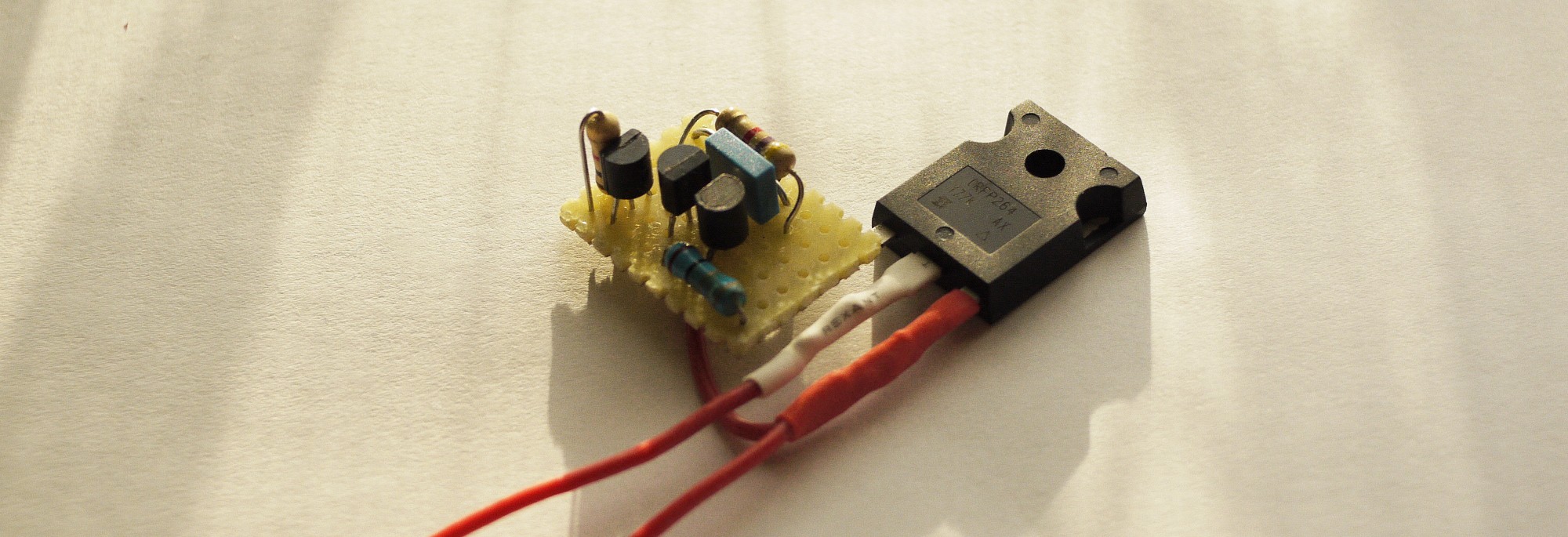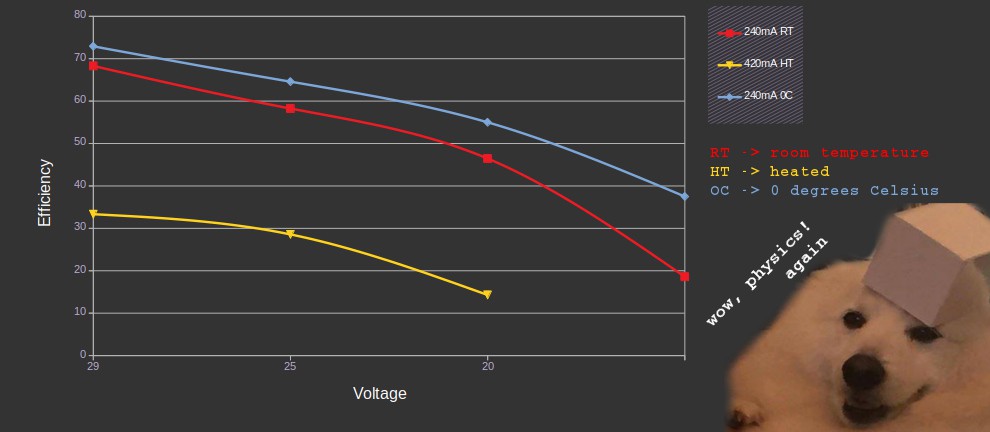Well, lazy me soldered high side MOSFET driver yesterday, in replace of strange IR2117 (probably, burned)

Yes, I cannot feel any heat, so I would return to surface-mount housings instead of heavy-lifters like TO-247 (however I like them, ahaha) - but it's not the interesting part!
Interesting part!
Now I have fully-working electromagnet driver, and I've made some test. Results were kind of intriguing. First of all, I found, that you can maintain semi-constant current on coil, it wouldn't affect efficiency. As you can see, current is quite stable. I'm not sure if I can achieve greater efficiency by increasing amount of withdrawn energy. So we can forget about kind of PWMed magnetic field! Hooray!
As you can see, current is quite stable. I'm not sure if I can achieve greater efficiency by increasing amount of withdrawn energy. So we can forget about kind of PWMed magnetic field! Hooray!
But question of efficiency remains unsolved for now:
 Gone wild! For some reason, supply voltage (and temperature!) affects it very much.
Gone wild! For some reason, supply voltage (and temperature!) affects it very much.Yes, I tried to put electromagnet in a refrigerator : )
Temperature can influence resistance, however U^2/R equation (which probably not works in this case anyway, for many reasons) shows increase in dissipated energy as R decreases. So it's not the case.
For curious - I found 30% increase in efficiency within 20 degrees Celsius, impressing!
Most logical explanation which I found - that at lower temperatures core demagnetizes slower, as wobbling of atoms drops and it's easier to maintain them orientated, as well as their fields.
Sound earnestly and simple, however physics behind might be more complicated (as usual)
And it seems that it requires quite steep signal slopes while pumping energy in. Why?
Ahaha, I don't know why for now! All heat dissipation physics in electronics is quite strange and describes "simple" cases only, like stable current flows. Everything is different there: we work with unstable current - it's benefit and a punishment also - pioneering never been easy.
70%+ efficiency isn't a bad result anyway, with better understanding of heat dissipation process we can make everything better, high-energy fields without overheating possible, "dense" electromagnets with awful core material as well. But it's quite hardcore and I don't know how long it would take for me to complete such an thought experiment : )
So, I cannot escape need to make some pure-Fe cores, if you remember - actuators worked nicely on tests with rare-earth magnets, but making electric clone of them emerged into lots of problems to solve
 CapitanVeshdoki
CapitanVeshdoki
Discussions
Become a Hackaday.io Member
Create an account to leave a comment. Already have an account? Log In.